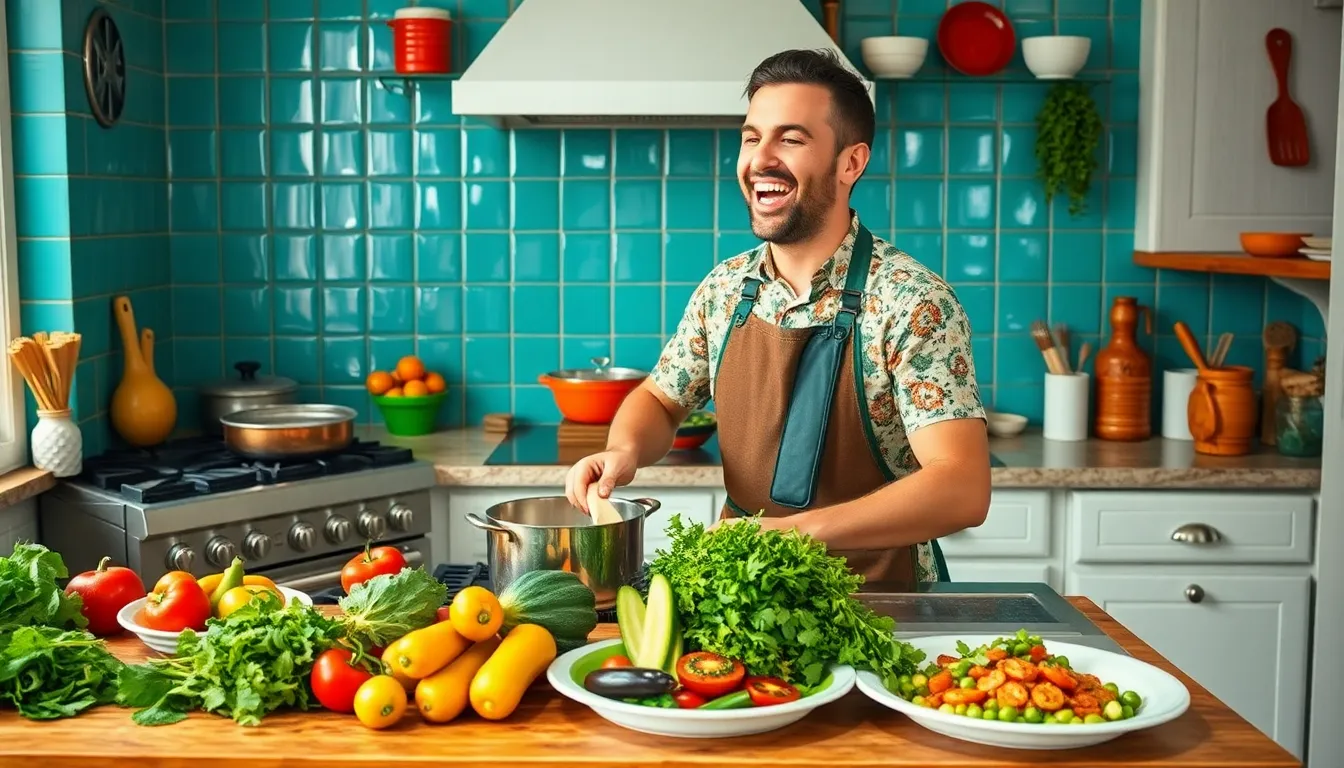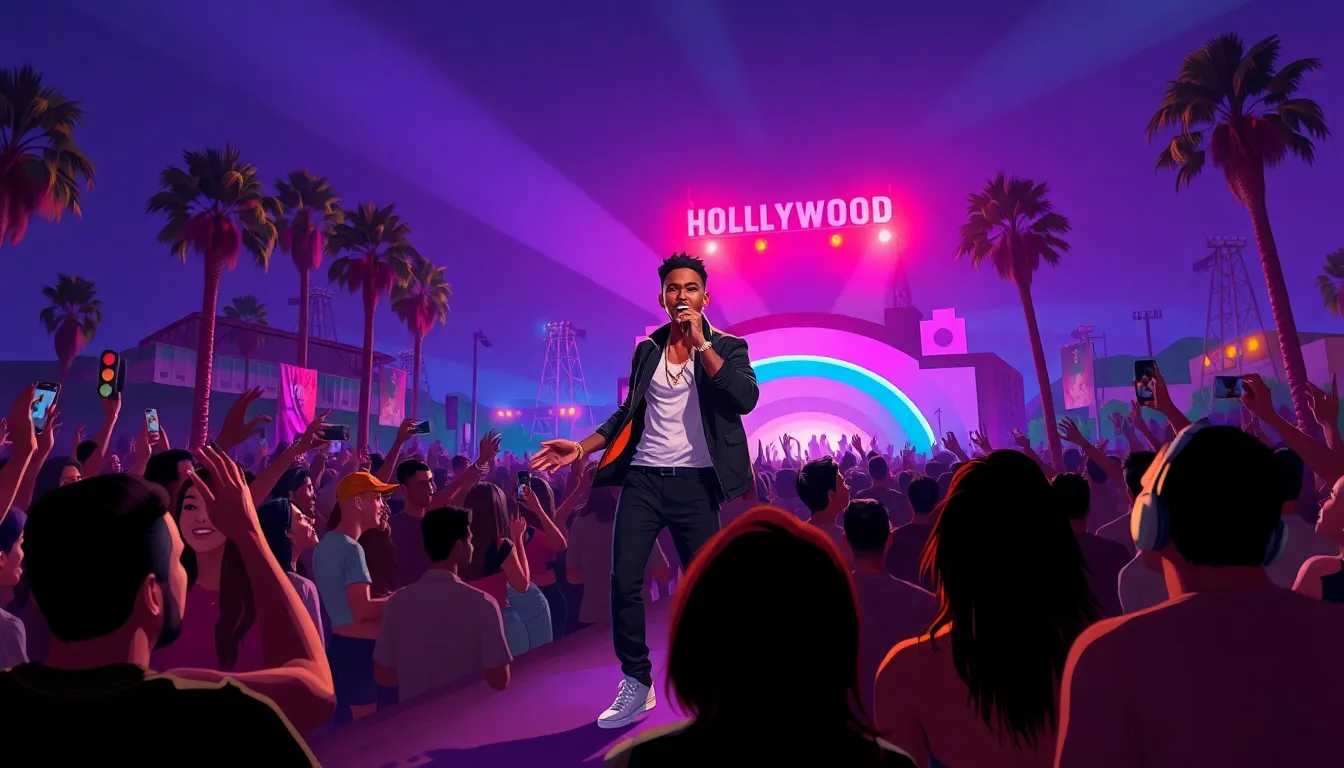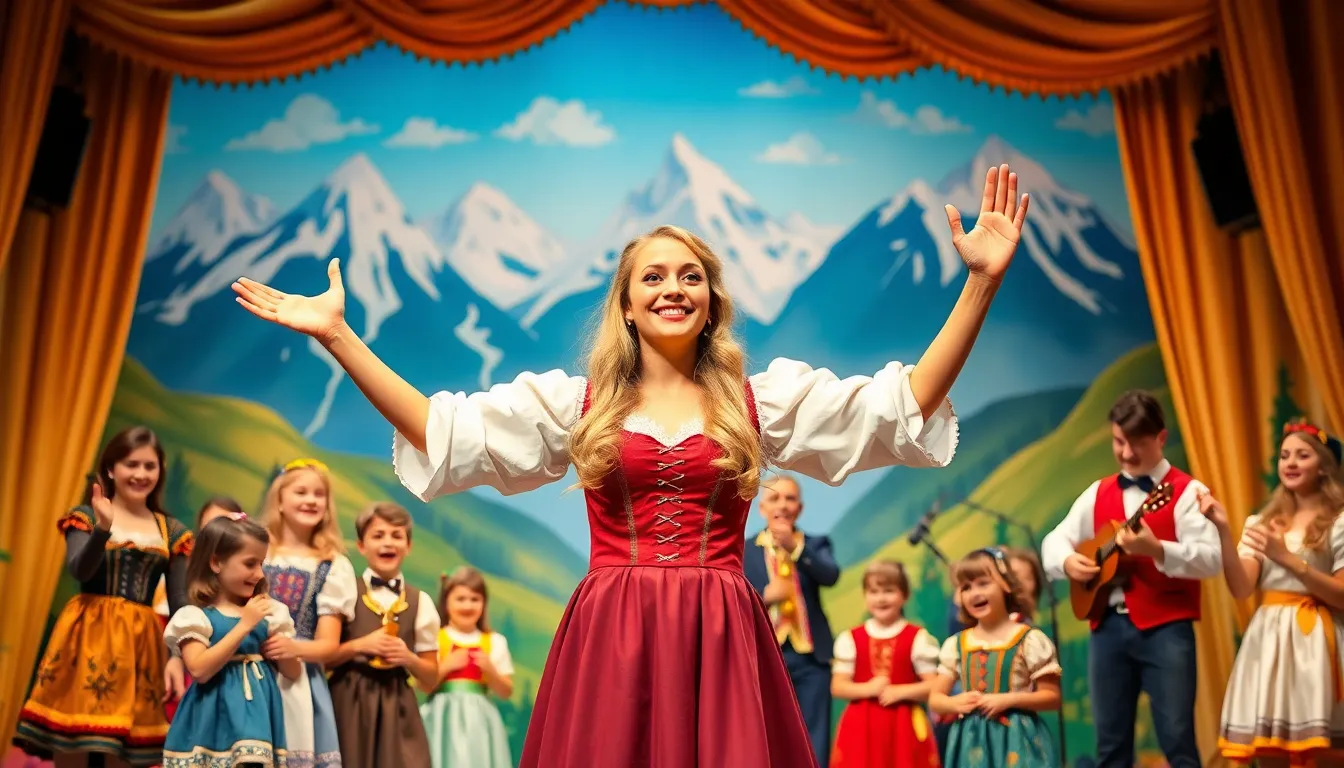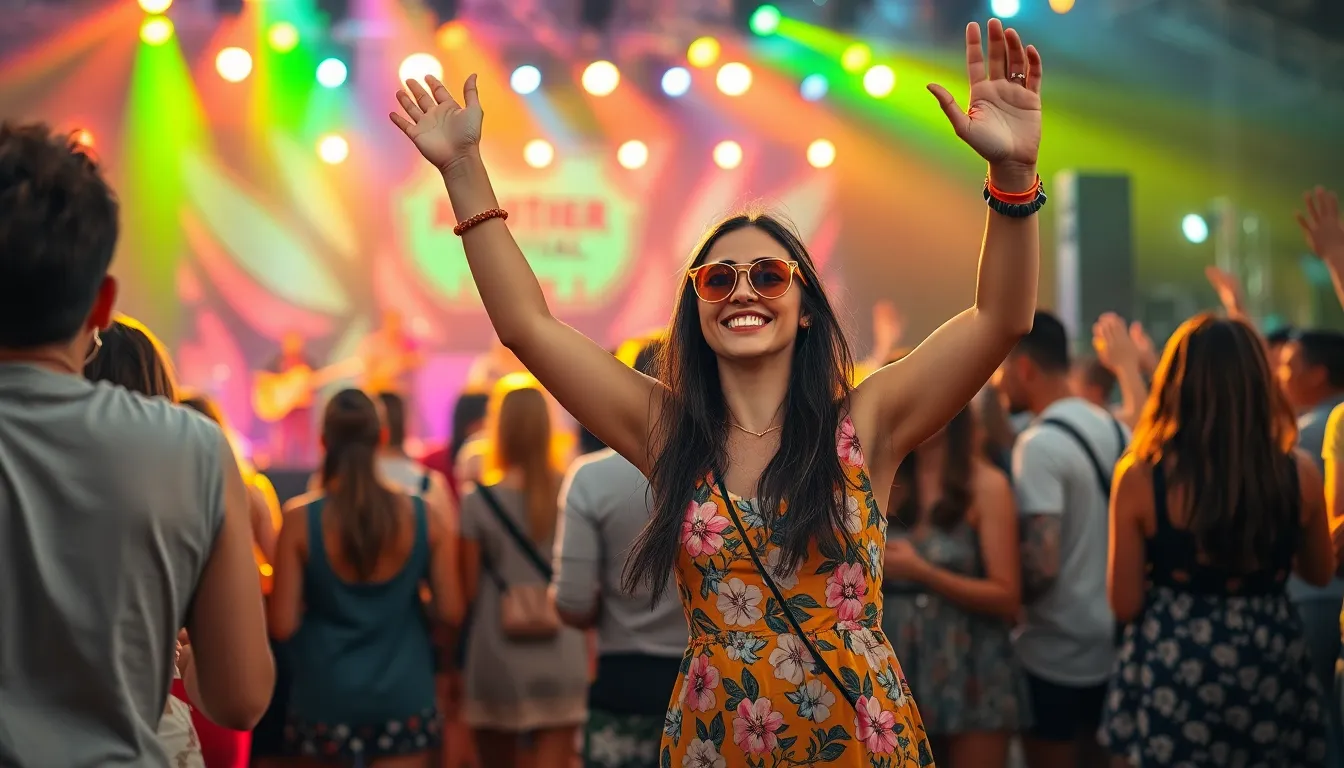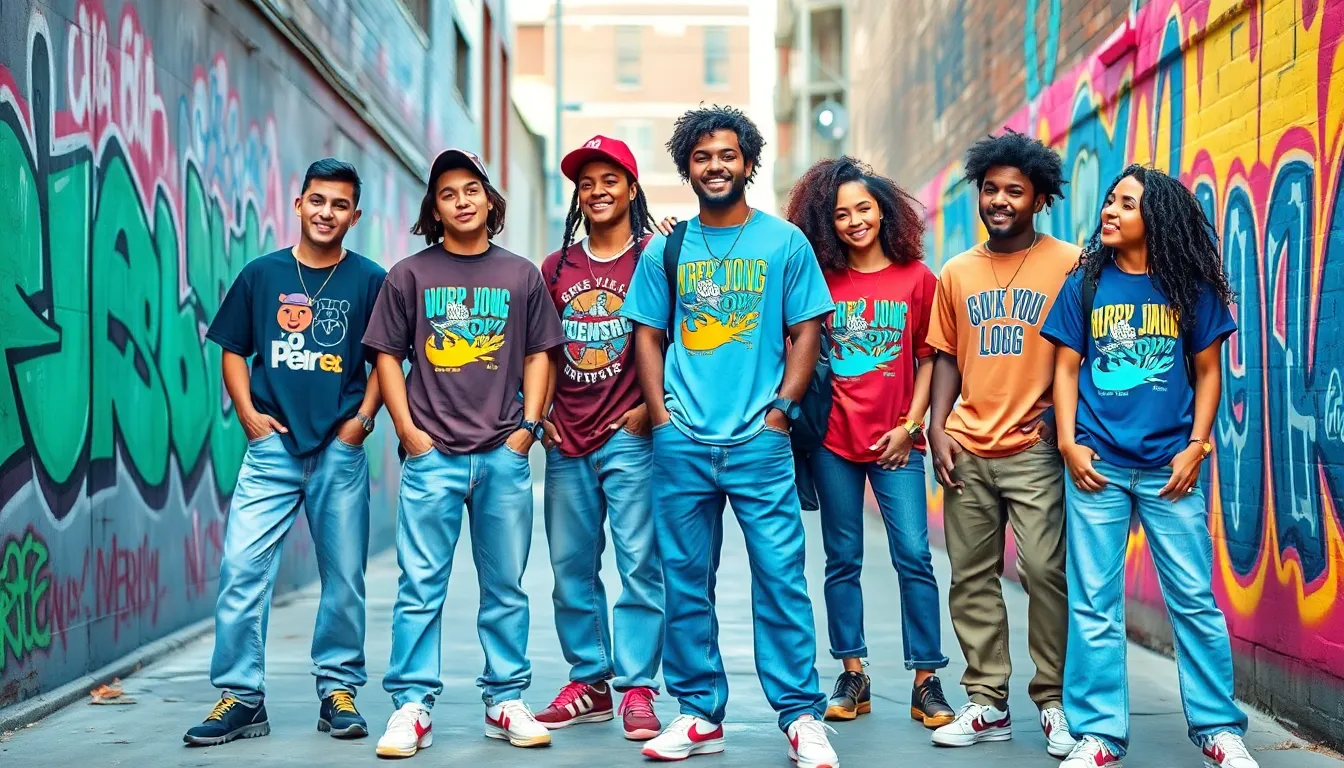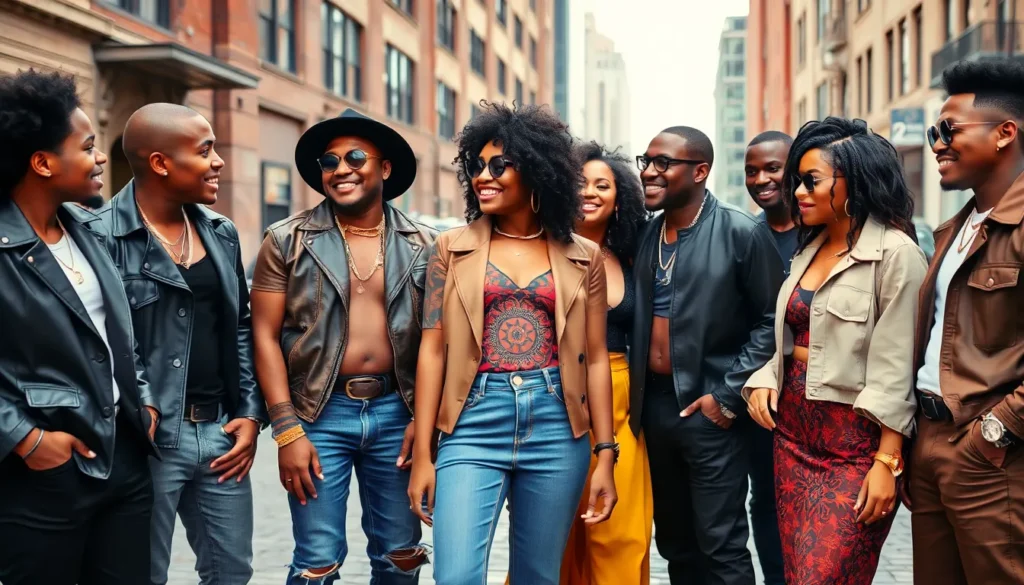Table of Contents
ToggleR&B collaborations have transformed the music landscape, blending diverse voices and styles to create unforgettable tracks. Artists from various genres come together, pushing creative boundaries and captivating audiences. This synergy not only enhances the richness of R&B but also introduces fresh sounds that resonate with fans across the globe.
From iconic duets to groundbreaking partnerships, these collaborations showcase the power of unity in music. They bring together legends and emerging stars, resulting in chart-topping hits that often redefine the genre. As R&B continues to evolve, the magic of collaboration remains a driving force, proving that great music knows no boundaries.
Overview of R&B Collaborations
R&B collaborations play a significant role in the genre’s evolution and popularity. Artists join forces to merge styles, creating unique sounds that captivate audiences. Collaborations often lead to innovative tracks that blend elements of hip-hop, pop, and soul, enhancing the listener’s experience.
Several factors contribute to the success of R&B collaborations:
- Artistic Diversity: Collaborating artists bring distinct influences to the table, resulting in a rich musical tapestry. The combination of established artists and newcomers can generate fresh perspectives.
- Broadened Reach: Partnership often exposes artists to wider audiences. Collaborators tap into each other’s fan bases, boosting visibility and chart performance.
- Creative Synergy: Collaborations foster a creative environment where artists inspire one another. This synergy leads to memorable hooks, powerful lyrics, and exceptional production.
- Cultural Impact: Collaborative tracks often reflect social themes, creating a deeper connection with listeners. These songs address issues like love, heartbreak, and empowerment, resonating across demographics.
As the genre continues to progress, R&B collaborations remain a driving force. They challenge traditional boundaries and set new standards in musical artistry.
Notable R&B Collaborations in History
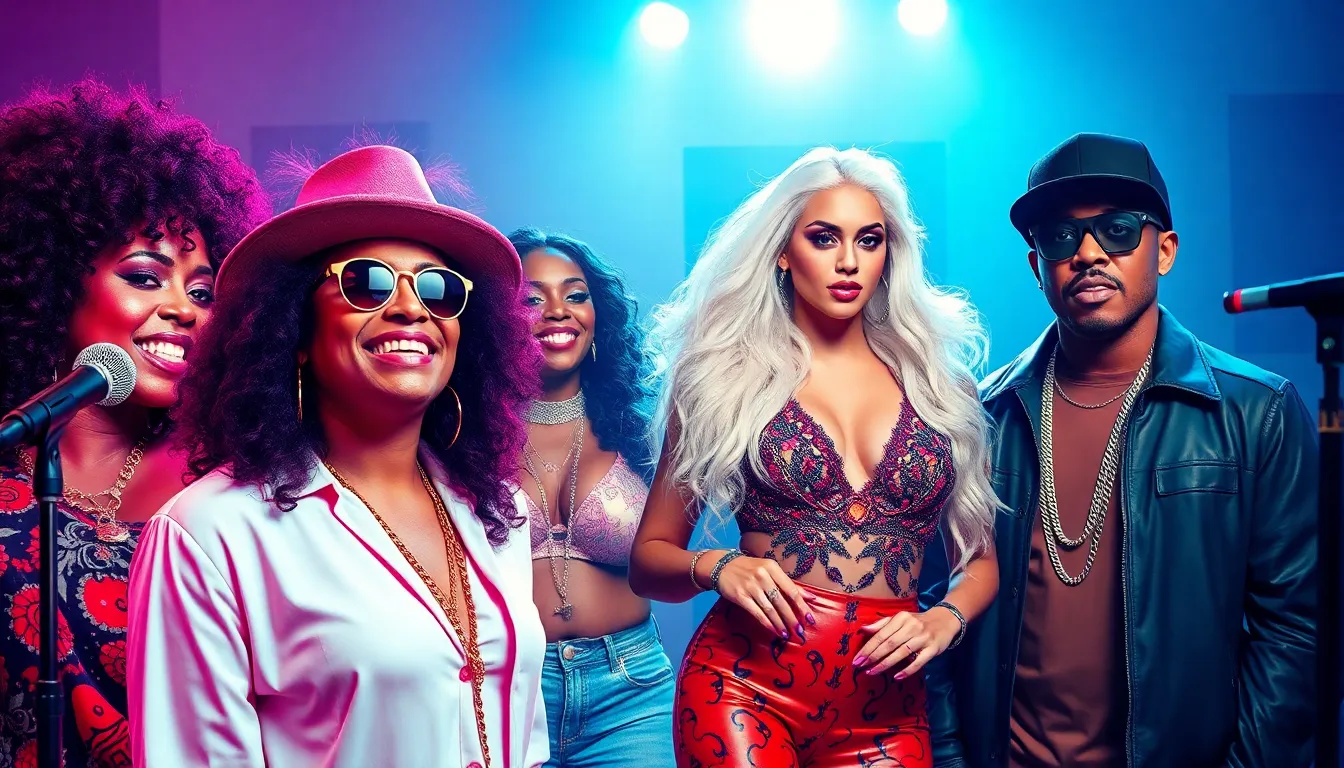
R&B collaborations have produced timeless tracks that showcase the genre’s creative evolution. These partnerships, spanning decades, highlight the powerful synergy between artists.
Classic Collaborations
Classic collaborations often set the stage for future partnerships in R&B. Iconic examples include:
- “Endless Love” by Diana Ross and Lionel Richie: This 1981 ballad became a massive hit, showcasing the emotive capabilities of both artists.
- “The Boy is Mine” by Brandy and Monica: Released in 1998, this duet topped charts and became an anthem for female empowerment in R&B.
- “You Make Me Feel Brand New” by The Stylistics: This soulful collaboration in 1974 highlighted the smooth vocal harmonies that defined the era.
These collaborations combined distinctive vocal styles, pushing boundaries and influencing countless artists.
Modern Collaborations
Modern collaborations reflect the genre’s adaptability and innovation. Notable instances include:
- “Shallow” by Lady Gaga and Bradley Cooper: This 2018 hit featured powerful vocal exchanges, blending pop and R&B influences effectively.
- “No Guidance” by Chris Brown and Drake: Released in 2019, this collaboration fused elements of hip-hop and R&B, demonstrating the synergy between the two artists.
- “Come Through” by H.E.R. featuring Chris Brown: The 2020 track showcases contemporary R&B’s emotional depth and modern production techniques.
These collaborations not only cater to diverse audiences but also push the boundaries of traditional R&B, ensuring its continued relevance in the music industry.
Impact of R&B Collaborations on the Genre
R&B collaborations significantly shape the genre’s landscape. These partnerships foster creativity and allow artists to expand their musical horizons.
Influence on Artists
Collaborations influence artists by encouraging experimentation. Artists like Beyoncé and Jay-Z showcase distinct styles, blending R&B with hip-hop elements. This cross-genre experimentation enhances their artistry and introduces new audiences to R&B. Collaborations create opportunities for artists to learn from each other, develop unique sounds, and innovate their musical techniques. Moreover, emerging artists benefit from partnering with established names, gaining exposure and credibility in the industry, which often leads to commercial success.
Cultural Significance
R&B collaborations carry deep cultural significance. They often address social themes, reflecting societal experiences and connecting with diverse audiences. Tracks like “Alright” by Kendrick Lamar and “This Is America” by Childish Gambino blend R&B with messages of social justice and resilience. These collaborative efforts transcend music, influencing culture, fashion, and identity. The partnerships not only unite different musical styles but also bridge cultural divides, fostering a sense of community among listeners and artists alike.
Current Trends in R&B Collaborations
R&B collaborations are rapidly evolving, reflecting the genre’s current landscape. Emerging artists and cross-genre partnerships both play critical roles in reshaping R&B’s sound and presence in the music industry.
Emerging Artists
Emerging artists leverage collaborations to gain visibility and credibility. For instance, partnerships with established R&B artists provide them access to larger audiences and industry insights. Notable examples include Summer Walker partnering with Usher on “Come Thru,” which showcases Walker’s growing influence alongside a legendary figure. Additionally, artists like Giveon and SZA have collaborated on tracks that highlight their unique vocal styles, attracting a dedicated fan base while pushing R&B forward. Such collaborations foster a supportive environment, allowing new talent to flourish while contributing fresh perspectives to the genre.
Cross-Genre Collaborations
Cross-genre collaborations feature prominently in contemporary R&B, creating innovative sounds that appeal to diverse audiences. Artists frequently merge R&B with genres such as hip-hop, pop, and electronic music. Tracks like “Industry Baby” by Lil Nas X and Jack Harlow exemplify this trend, blending catchy hooks with smooth R&B elements. Collaborations between R&B and other genres expand creative possibilities, driving artistic evolution. Furthermore, collaborations like Khalid’s work with electronic producer Marshmello demonstrate the seamless integration of different musical styles, enhancing the accessibility and reach of R&B. These partnerships reflect artists’ willingness to experiment and redefine genre boundaries, cementing R&B’s position in today’s music scene.
R&B collaborations are reshaping the music landscape in profound ways. These partnerships not only showcase the versatility of artists but also highlight the genre’s ability to evolve and resonate with diverse audiences. By blending styles and perspectives, R&B collaborations create a rich tapestry of sound that captivates listeners and pushes creative boundaries.
As the genre continues to thrive, the significance of collaboration will only grow. It fosters innovation and encourages artists to explore new artistic territories. The future of R&B looks bright as artists unite to craft memorable tracks that reflect both personal and cultural narratives, ensuring the genre remains relevant and impactful in the ever-changing music industry.


